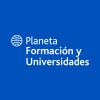
“Fast learning” or how to learn a new skill in less than 24 hours
The approach to language learning has undergone a complete transformation. In the past, mastering a new language could take up to seven years of continuous study, not to mention the necessity of traveling abroad. However, in the 21st century, some individuals can engage in conversations in a new language within a week. What once demanded years of repetition and patience can now be accelerated through well-designed techniques and a mindset geared toward change.
Fast learning emerges at this intersection of the need for rapid adaptation and the tools that facilitate such change. It's not about learning at breakneck speed without discernment but about adopting a strategic and, above all, effective approach.
At Planeta Formación y Universidades, we recognize that learning quickly doesn't equate to superficiality but rather to increased focus and fewer distractions. The professional landscape of the future will be dynamic and volatile; those who master this skill will distinguish themselves in a highly competitive market.
Fast learning: what it is and main characteristics
Fast learning emphasizes efficiency, focusing on acquiring specific skills or knowledge in the shortest time possible without compromising quality. It incorporates concepts like microlearning —which breaks content into small, highly focused segments— and emphasizes practical application from the outset.
This approach isn't about rote memorization but about learning through doing: making mistakes, correcting them, and repeating the process. Consequently, this methodology is often applied in work environments or training scenarios where time is critical, such as when an individual needs to grasp a new digital tool within a couple of days or develop a specific skill for an urgent project.
Fast learning doesn't necessitate lengthy sessions or fixed schedules; it leverages short videos, podcasts, tutorials, interactive apps, and practical challenges. Additionally, it's designed to yield quick results, which serves as motivation to continue.
Differences with other learning methods
Fast learning operates differently from traditional learning models. Here, the logic is reversed: learning by doing from the beginning. It starts with exercises, concrete examples, and real-world problems.
Unlike traditional learning, which often aims at passing exams, fast learning focuses on immediately addressing specific needs. For instance, learning to edit a video, preparing a presentation in another language, or mastering a newly introduced digital tool at work.
Techniques and strategies for fast learning
Effective methods to improve learning speed
There are concrete strategies to accelerate learning. One well-known method is spaced repetition, which involves reviewing learned material multiple times, with increasing intervals between each review. This technique has been proven to help solidify information in our memory.
Another effective method is the FeynmanTechnique, which entails explaining what you're learning in your own words, as if teaching someone unfamiliar with the subject. If you can't explain it simply, it indicates that the concept hasn't been fully understood.
Immediate practice after learning also proves beneficial, even with brief exercises. For example, if you're learning to program, instead of watching a 30-minute class, it's more effective to write a line of code every five minutes. The key is to prioritize practice over accumulating theoretical knowledge.
Recommended tools and resources
To implement these techniques, several practical resources are available.
- Anki, for example, is a free app that allows you to create flashcards using the spaced repetition system. Similarly, Duolingo helps you learn languages through short, gamified sessions.
- For those who prefer books, “Make It Stick” or “Ultralearning” are excellent references for understanding effective learning processes.
Importance of constant practice and growth mindset
All these methods are of little use without consistent practice. Learning quickly isn't about cramming one day and forgetting the next but about establishing sustainable habits. Practicing a little each day is more effective than intensive, sporadic study sessions. Moreover, it's crucial to adopt a growth mindset: understanding that talent isn't fixed and that skills can be developed. If something doesn't go well initially, it doesn't mean improvement isn't possible; it's merely part of the learning process.
Benefits of fast learning
Advantages in professional and personal areas
Rapid learning is valuable not only in the workplace but also in everyday life. Professionally, it enables individuals to stay updated with constantly evolving tools and methodologies. Instead of enrolling in a six-month course, many workers opt for shorter, more focused training that provides exactly what they need for immediate application.
On a personal level, acquiring new skills keeps the brain active, enhances memory, and boosts confidence. From learning to use a task-organizing app to playing a song on the guitar after watching a 10-minute video, the ability to quickly acquire skills changes how we approach new challenges, reducing frustration and increasing motivation.
Impact on adaptability and labor competitiveness
Fast learning is particularly beneficial when a company adopts a new tool or enters an unfamiliar sector. Studies indicate that the ability to learn quickly is among the most valued skills by employers, as it allows organizations to respond to changes without relying on lengthy training processes.
Furthermore, many individuals use this strategy to transition roles, take on new responsibilities, or enhance their professional profiles. For example, learning to use design software in a few days can be the first step in moving from an administrative position to a more creative role.
Applications of fast learning in the workplace
How to stand out as a fast learner on your resume
Saying that you're a "quick learner" on your resume might sound appealing, but without concrete examples, it’s just an empty, generic phrase. What truly makes a difference is demonstrating how that ability has positively impacted your work or helped you solve real problems.
For example, rather than writing “I’m a fast learner,” it’s far more effective to say something like: “Taught myself to use [Tool X] in under 15 days, which improved incident tracking and reduced response time by 25%.”
That’s the key: back up the claim with clear examples—whether it's a course you completed, a certification you earned, or a personal project you developed to build a specific skill.
You can also highlight how you've successfully handled unfamiliar situations without prior experience. This might include adapting quickly to a new team or environment, leading a process without formal training, or implementing a new tool or workflow from scratch.
Conclusion
At Planeta Formación y Universidades, with a network of 22 educational centers across several countries, we fully recognize the value of this learning approach. Each year, more than 150,000 students from over 100 nationalities benefit from programs specifically designed to meet the fast-changing demands of the job market. These programs are flexible, practical, and focused on real-world results.
If you're ready to take your learning to the next level and advance your career, we invite you to explore the many opportunities offered by our global network. Discover a wide variety of programs tailored to today’s professional challenges—and take that next big step toward your future.
